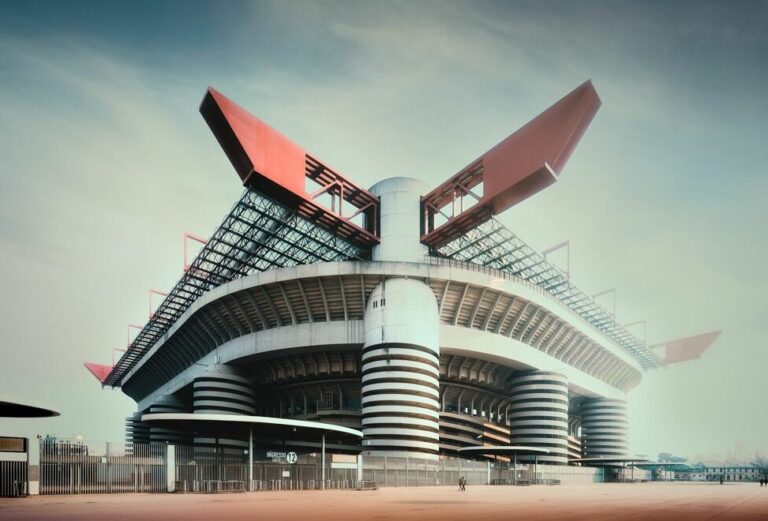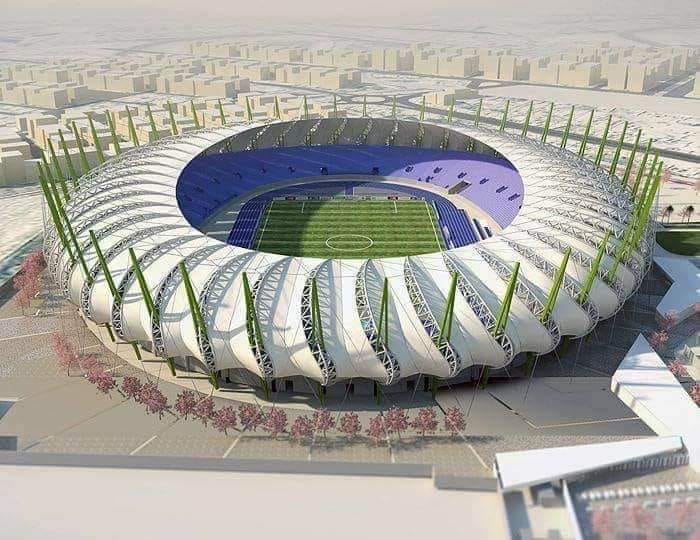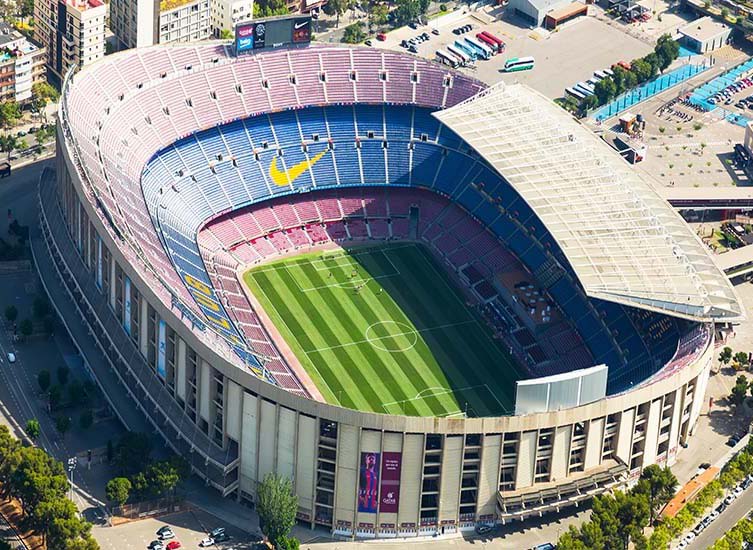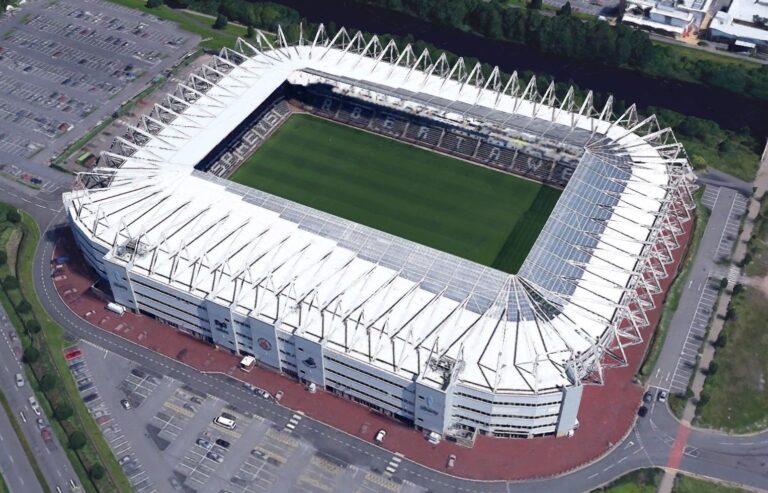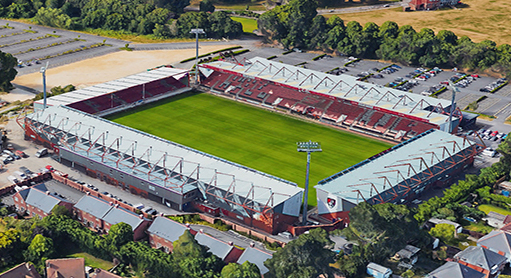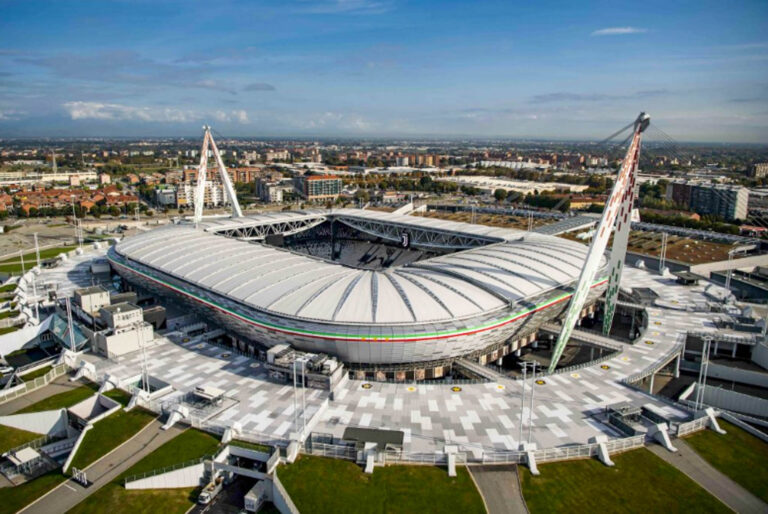Arrowhead Stadium Capacity, Tickets, Seating Plan, Records, Location, Parking
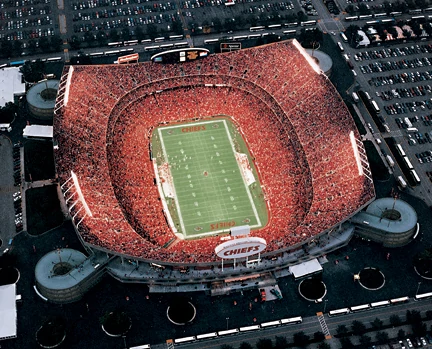
Arrowhead Stadium is an American football stadium in Kansas City, Missouri. It primarily serves as the home of the Kansas City Chiefs of the National Football League (NFL). The stadium has been officially named GEHA Field at Arrowhead Stadium (pronounced GEHA) since March 2021, following a naming rights deal between GEHA and the Chiefs.
The deal began at the start of the 2021 season and ends in January 2031 with the expiration of the team’s lease with the stadium’s owner, the Jackson County Sports Complex Authority.
It is part of the Truman Sports Complex with adjacent Kauffman Stadium, the home of the Kansas City Royals of Major League Baseball (MLB). Arrowhead Stadium has a seating capacity of 76,416, making it the 27th largest stadium in the United States and the sixth largest stadium in the NFL.
It is also the largest sports facility by capacity in the state of Missouri. A $375 million renovation was completed in 2010. The stadium is scheduled to host matches of the 2026 FIFA World Cup.
| Built In: | July 11, 1968 |
| Capacity: | 76,416 |
| Home Teams: | Kansas City FC |
Arrowhead Stadium History
When the Dallas Texans of the American Football League (AFL) moved to Kansas City in 1963 and were renamed the Chiefs, they played their home games at Municipal Stadium. They originally shared the stadium with the Kansas City Athletics of Major League Baseball, but the A’s moved to Oakland, California, after the 1967 season, and the expansion Kansas City Royals was added in 1969.
Municipal Stadium, built in 1923 and largely rebuilt in 1955, had a capacity for approximately 35,000 American football spectators, but as part of the AFL-NFL merger announced in 1966, NFL stadiums would have to accommodate no less than 50,000 people. With Kansas City City being unable to find a suitable location for a new stadium, Jackson County stepped in and offered a location on the eastern edge of Kansas City near the junction of Interstate 70 and Interstate 435.
Voters approved a $102 million bond issue in 1967 to build a new two-stadium sports complex. The original design called for baseball and soccer stadiums to be built side by side with a common roof that would roll between them. The design turned out to be more complicated and expensive than originally thought, so it was discarded in favor of the current open-air configuration. The Chiefs staff, led by the team’s general manager Jack Steadman, helped develop the complex.
Construction
Construction began in 1968. The original two-stadium concept was initially designed by Denver architect Charles Deaton and Steadman. Baseball and soccer stadiums look very different, but they share utilities, parking, and underground storage. Plans to have indoor stadiums were abandoned, leaving two outdoor stadiums. Lamar Hunt included an owner’s suite, complete with three bedrooms, baths, a kitchen, and a living room, to the football stadium design. To increase seating and limit the space taken up by the stadium, the upper sections were placed on a steep slope that cannot be replicated in modern stadiums due to accessibility regulations.
Deaton’s design was implemented by the Kansas City architectural firm of Kivett & Myers. Arrowhead Stadium is considered by some to have had an influence on the design of several future NFL stadiums. The construction of the stadium was a joint venture of the Sharp-Kidde-Webb construction companies.
Construction on Arrowhead Stadium was completed in time for the 1972 season. On August 12, 1972, the Chiefs defeated the St. Louis Cardinals 24-14 in the preseason opener at Arrowhead Stadium. On November 5, 1972, 82,094 people (the largest crowd ever to see a game at Arrowhead Stadium) watched the Chiefs defeat the Oakland Raiders, 27-14, to mark their first regular-season victory in their new home.
In 1973, the stadium was the first in the NFL to include arrows on the yardage markers to indicate the nearest goal line. (Initially, they resembled small Indian arrowheads.) This practice would eventually spread to the other NFL stadiums as the 1970s progressed, eventually becoming league-wide mandatory in the 1978 season (after being used in Super Bowl XII), and becoming almost universally at the lower levels of soccer.
On January 20, 1974, Arrowhead Stadium hosted the Pro Bowl. Due to an ice storm and brutally cold temperatures the week before the game, game participants worked out at the San Diego Chargers facility. On game day, the temperature soared to 41 °F (5 °C), melting most of the ice and snow that had accumulated during the week. The AFC defeated the NFC, 15-13.
In 1984, the Jackson County Sports Authority re-evaluated the concept of a fabric dome. The concept was scrapped as unnecessary and financially impractical. Arrowhead hosted the Drum Corps International World Championship in 1988 and 1989.
Two Diamond Vision screens shaped like soccer balls were installed in 1991. In 1994, other improvements were made and a natural grass playing surface was installed, replacing the original artificial AstroTurf playing field.
In 2009, Arrowhead Stadium completed a multi-million dollar embedded system installation from Daktronics in Brookings, South Dakota. Two high-definition video screens were retrofitted to the existing soccer ball-shaped screens in both end zones. Approximately 1,625 feet (495 m) of digital tape board technology was also installed in the stadium.
In 2021, the Chiefs sold the naming rights to Arrowhead Stadium to GEHA, renaming it GEHA Field at Arrowhead Stadium.
Arrowhead Stadium will be one of the hosts for the 2026 FIFA World Cup and is scheduled to undergo minor renovations in the coming years. Seating capacity is expected to be reduced in the corners of the end zones to comply with FIFA pitch regulations. Space would also have to be made for hospitality and media seating (outside the stadium’s already existing press box). The field will also experience improvements to its ventilation system.
Stadium Capacity
Arrowhead Stadium has a seating capacity of 76,416.
Arrowhead Stadium Seating Plan
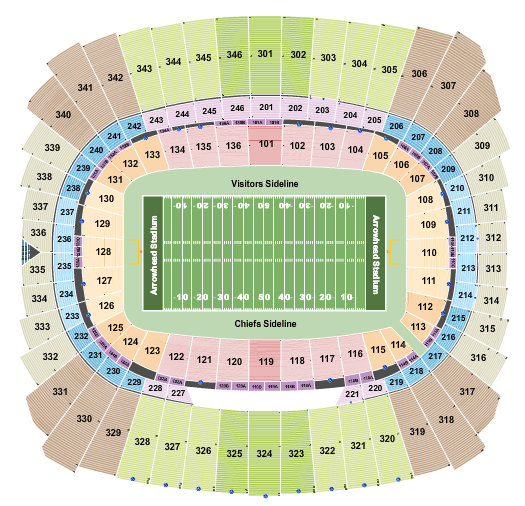
Notable Events & Records
College Football
Arrowhead Stadium has hosted five Big 12 Conference football championship games: Kansas State versus Oklahoma in 2000 and 2003, Colorado versus Oklahoma in 2004, Nebraska versus Oklahoma on December 2, 2006, and Missouri versus Oklahoma in 2008.
From 2007 to 2011, Arrowhead Stadium hosted the Border Showdown between the Kansas Jayhawks and the Missouri Tigers. The 2007 game between the #2 Jayhawks and #3 Tigers drew the second largest crowd in stadium history, at 80,537, with the Tigers winning 36-28. Kansas also played Oklahoma in Arrowhead in 2005. Missouri played Arkansas State in 2005, BYU in 2015, and was scheduled to play Arkansas in 2020.
In 2009 and 2010, Arrowhead Stadium hosted football games between the Iowa State Cyclones and the Kansas State Wildcats.[26] Iowa State previously played Arrowhead against the Florida State Seminoles in the 2002 Eddie Robinson Classic. Kansas State played Cal in the 2003 Eddie Robinson Classic.
In 1998, Oklahoma State moved its scheduled home game against Nebraska to Arrowhead.
The stadium also hosted the annual Fall Classic at Arrowhead, a Division II game that featured Northwestern Missouri State University and Pittsburgh State University. The 2004 game featured No. 1 Pittsburg State defeating No. 2 Northwest Missouri State in the only Division II game to feature the top two teams in the nation playing in the regular season finale.
Upcoming Events
2026 FIFA World Cup
Arrowhead Stadium was chosen as one of 16 venues to host matches during the 2026 FIFA World Cup, which will be jointly hosted by the United States, Canada, and Mexico. The stadium will require renovations. Kansas City, Missouri Mayor Quinton Lucas estimated the necessary renovations at $50 million.
Parking
Overnight parking is not allowed for any vehicle. Early entry is not permitted for any vehicle. If your Pass is designated as a Red, Gold or Platinum Parking Pass, it allows you to park one vehicle in a parking space in a lot corresponding to the parking pass within the Truman Sports Complex.

